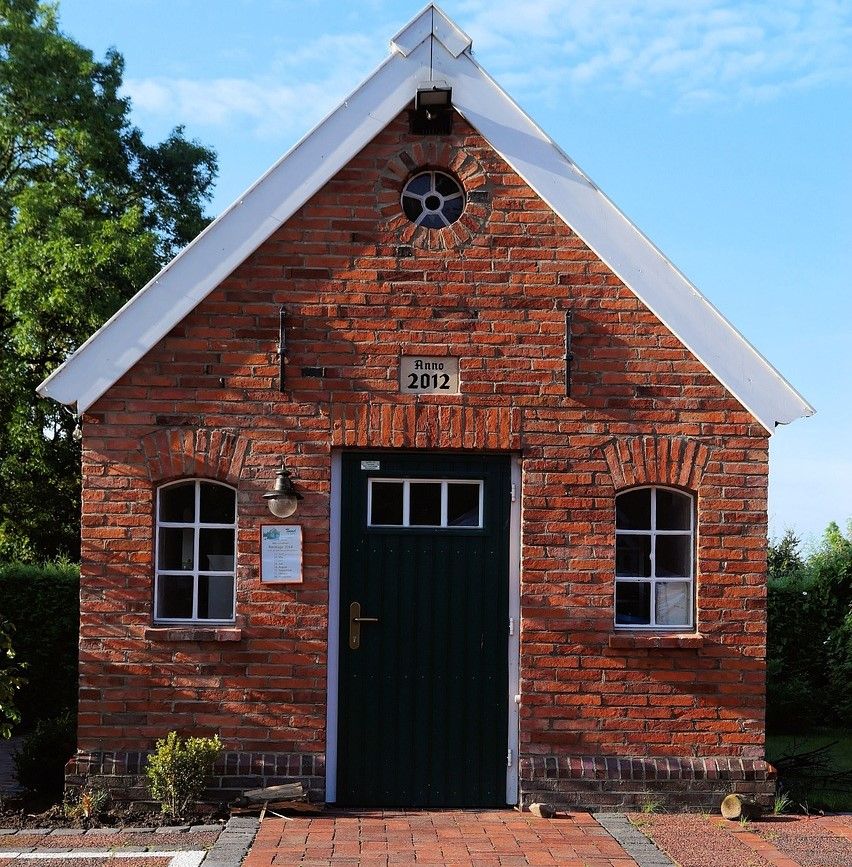Key Takeaways
- Understanding ADUs: Accessory Dwelling Units (ADUs) are secondary housing units on a single-family lot. They can serve multiple purposes and offer a range of benefits.
- Benefits of Building an ADU: ADUs can provide a source of rental income, increase property value, and offer an affordable housing solution.
- Financing Options for ADUs: Financing an ADU can be achieved through various avenues, such as personal savings, loans, or government programs.
- ADU Construction Costs and Budgeting: Constructing an ADU involves several costs, including design, permits, and construction. Careful budgeting is essential.
- Securing Loans for ADU Projects: There are specific loan options available for ADUs, and understanding the application and approval process can help increase your chances of securing one.
- Government Programs for ADU Financing: Some local and federal programs offer financial assistance for ADU construction.
- Finding the Best ADU Financing Deals: Researching and comparing different financing options can help you secure the best deal.
- Managing ADU Financing: Once you've secured financing, it's crucial to develop a repayment and budgeting strategy to manage your loan effectively.
Introduction
In today's evolving housing market, Accessory Dwelling Units (ADUs) are becoming increasingly popular for their versatility, affordability, and potential for extra income. ADUs, also known as granny flats, backyard cottages, or secondary suites, are additional living spaces on a single-family lot. They can either be attached to the primary house or standalone structures.
ADUs offer an intriguing solution to a variety of housing challenges. They can serve as rental units, providing a steady stream of income, or as independent living quarters for aging parents or adult children. Additionally, they can significantly boost property values, making them an appealing investment for homeowners.
Yet, building an ADU involves considerable planning and financial resources. This is where ADU financing comes into play, providing the necessary funds for construction. From loans to government programs, there are several financing options available to prospective ADU owners. This article seeks to provide a comprehensive guide to ADU financing, helping you make an informed decision that aligns with your financial goals and needs. Join us as we delve into the world of ADU financing.
Understanding ADUs: Navigating Zoning Laws and Types
Accessory Dwelling Units (ADUs), often referred to as granny flats, backyard cottages, or secondary suites, represent a versatile and increasingly popular housing solution. These structures can be detached, attached, or interior, each offering unique advantages depending on homeowner needs and property constraints.
- Detached ADUs are standalone structures that provide the greatest privacy and independence from the main house. They are often more costly, ranging from $100,000 to $200,000, but offer the potential for higher rental income due to their size and separateness.
- Attached ADUs are built as extensions to the existing main house, such as above a garage or as a wing. These typically cost 20% to 30% less than detached units due to shared building elements like walls and utilities.
- Interior ADUs involve converting existing spaces within a home, like basements or attics. This type is the most cost-effective, often requiring only a 5% to 15% increase in the existing home budget, making it an attractive option for on-budget expansions.
While the functional and financial benefits of ADUs are clear, potential builders must also navigate the complex landscape of local zoning laws and regulations, which vary significantly by locality. Zoning regulations can affect:
- Size and Placement: Many areas have specific limits on the size of ADUs or where they can be placed on a property.
- Usage: Some localities may restrict the use of ADUs for rentals or limit occupancy based on the number of available parking spots or proximity to transit lines.
- Ownership: Certain regulations require the homeowner to live in one of the units on the property, which could influence rental opportunities.
Understanding these local zoning laws is crucial as they directly impact feasibility and the legal requirements of ADU projects. Homeowners considering an ADU should start by consulting their local planning department for detailed information on permissible structures, requirements, and potential restrictions. Engaging with professionals who specialize in local real estate and zoning can also provide valuable guidance and help streamline the approval process.
By combining knowledge of ADU types with a thorough understanding of relevant zoning laws, homeowners can better plan and execute their ADU projects, ensuring they meet local standards and maximize their investment.

The advantages of ADUs are numerous:
- Additional Income: Renting out an ADU can generate a steady income stream. According to a survey, the median monthly rental income from ADUs in the US is around $800.
- Increased Property Value: ADUs can boost property value by 20% to 30%, making them a profitable long-term investment.
- Flexible Living Space: ADUs can serve as independent living quarters for family members, guest homes, or even home offices.
- Affordable Housing Solution: ADUs offer a cost-effective housing option, particularly in high-cost areas, thereby contributing to the affordability of the local housing market.
By understanding the types and advantages of ADUs, prospective homeowners can make well-informed decisions and leverage these units to their financial advantage.
Benefits of Building an ADU
Building an ADU brings with it a host of both financial and non-financial benefits.
- Financial Gains: One of the most appealing advantages of an ADU is the potential for rental income. For example, in areas with high demand for housing, an ADU can generate substantial monthly income. In cities like Portland or Seattle, ADUs can garner anywhere from $1,000 to $2,000 per month in rent. Additionally, adding an ADU can increase your property's value. A study by the University of Oregon showed that properties with ADUs saw a 51% increase in resale value.
- Affordable Housing Solution: ADUs offer an affordable housing solution for family members. They can be used as living spaces for aging parents, providing them with independence while keeping them close. Alternatively, they can serve as starter homes for adult children saving for their own houses.
- Community Development: On a broader scale, ADUs contribute to community development by increasing the density of housing without altering the neighborhood's character. They provide additional housing options in areas with limited space for new construction.
- Sustainability: ADUs are typically smaller than traditional homes, thus requiring fewer resources to build and maintain. This makes them an eco-friendly housing option.
- Flexibility: The uses for an ADU are versatile. They can serve as home offices, guest houses, rental properties, or personal spaces like gyms or art studios. This flexibility adds a unique value proposition to properties with ADUs.
Accessory Dwelling Units (ADUs) offer versatile solutions for a variety of housing needs, effectively addressing challenges like multigenerational living and retirement planning. Here are some examples that showcase the practical and beneficial use of ADUs:
- Multigenerational Living: ADUs have proven to be a valuable solution for families looking to support each other while maintaining individual privacy and independence. For example, some families have built ADUs to provide separate living spaces for elderly parents. This arrangement allows older family members to live near their children and grandchildren, ensuring they receive necessary support without forgoing their independence. This setup is not only emotionally beneficial but also financially prudent, especially in areas where housing costs are prohibitively high (Source: REIPulse).
- Retirement Strategy: ADUs are also being increasingly utilized as part of retirement strategies. Individuals are building ADUs to generate additional rental income that supplements their retirement funds. Alternatively, some choose to downsize into the ADU themselves, renting out their main house to enhance their retirement income. This approach helps retirees maintain financial stability and independence, providing a steady income stream while reducing living expenses (Source: Accessory Dwellings).
- Community and Sustainability: Beyond personal use, ADUs contribute to community development by increasing housing density without altering the existing neighborhood fabric. They provide affordable housing options and are considered a sustainable housing solution due to their efficient use of land and resources. This makes ADUs an attractive option for urban planning and community development initiatives, supporting the dual goals of affordability and sustainability (Source: REIPulse).
These examples clearly demonstrate that ADUs can be a practical and effective solution to various modern housing challenges. Whether for family, financial, or community benefits, ADUs offer a flexible and cost-effective approach to managing living spaces.
Financing Options for ADUs
Financing an Accessory Dwelling Unit (ADU) can be achieved through various avenues. Let's delve into some popular financing options:
- Home Equity Loans and Lines of Credit (HELOCs): These are loans that use your home's equity as collateral. The amount you can borrow is determined by the value of your home and the amount of equity you've built. Interest rates for these loans are usually lower than personal loans, making them an attractive option.
- Cash-Out Refinance: This involves refinancing your mortgage for more than you owe, and then pocketing the difference. This can be a smart move if interest rates have dropped since you got your original mortgage.
- Construction Loans: These are short-term loans that cover the cost of building an ADU. Once the construction is complete, you can either pay off the loan in full or convert it into a traditional mortgage.
- Personal Loans: These are unsecured loans that can be used for any purpose, including building an ADU. They typically have higher interest rates than other loans.
- Government Programs: Various federal, state, and local government programs offer financial assistance for ADU construction. For example, Fannie Mae's HomeStyle Renovation mortgage allows borrowers to include renovation costs in their mortgage.
Here's a comparative table of these options:
Financing Option | Pros | Cons |
Home Equity Loans | Lower interest rates, tax-deductible interest | Puts your home at risk if you can't repay |
Cash-Out Refinance | Potentially lower interest rates, larger loan amounts | Higher closing costs, extends loan term |
Construction Loans | Covers construction costs, flexible payment options | Higher interest rates, short-term |
Personal Loans | Quick funding, no collateral needed | Higher interest rates, smaller loan amounts |
Government Programs | Low-interest rates, various assistance programs | Strict qualifications, complex application process |
Choosing the right financing option depends on your financial situation, the cost of the project, and your long-term financial goals.
ADU Construction Costs and Budgeting
The cost of constructing an Accessory Dwelling Unit (ADU) can vary widely depending on several factors such as the type of ADU, its size, location, and the materials used.
- Type of ADU: Detached ADUs are generally the most expensive, costing between $100,000 to $200,000. Attached ADUs, which require modifying an existing structure, typically cost between $75,000 and $150,000. Interior ADUs, such as basement or attic conversions, are the most affordable, ranging from $50,000 to $100,000.
- Size and Design: Larger and more complex ADUs will naturally cost more. High-end finishes and custom designs can also significantly increase costs.
- Permitting and Fees: Fees for permits, inspections, and hookups can add several thousand dollars to your budget. These costs vary by location, so it's essential to research local regulations.
- Site Preparation: Costs associated with preparing the site, such as demolition, tree removal, or grading, should also be factored into your budget.
To budget for an ADU project, it's essential to consider all potential costs and build in a contingency for unexpected expenses. Here are some steps:
a. Estimate Construction Costs: Get quotes from several contractors to estimate the construction cost. Ensure the quotes include all aspects of the project, from site preparation to finishing touches.
b. Factor in Soft Costs: Include soft costs such as design, permitting, and fees in your budget.
c. Plan for Contingencies: Include a contingency of at least 10-20% to cover unexpected costs that may arise during construction.
d. Consider Financing Options: If you're not funding the project with savings, consider your financing options and factor in any loan repayments into your budget.
e. Monitor Expenses: Keep track of all expenses during the project to ensure you're staying on budget. Changes mid-construction can significantly increase costs, so try to stick to the original plan as much as possible.

Securing Loans for ADU Projects
Securing a loan for an Accessory Dwelling Unit (ADU) project is very similar to securing a loan for any other home improvement project. The process typically involves the following steps:
- Assess Your Financial Situation: Lenders will look at your credit score, income, debt-to-income ratio, and other factors to determine your eligibility for a loan. It's important to have a clear understanding of your financial situation before applying for a loan.
- Research Loan Options: As discussed earlier, there are several loan options available for ADU projects including personal loans, home equity loans, cash-out refinances, and construction loans. Each of these has its benefits and drawbacks. For example, home equity loans tend to have lower interest rates but put your home at risk, while personal loans don't require collateral but often have higher interest rates.
- Apply for the Loan: Once you've selected a loan type, you'll need to submit an application to the lender. This will typically involve providing financial documents such as pay stubs, tax returns, and bank statements.
- Wait for Approval: After submitting your application, the lender will review your financial situation and decide whether to approve your loan. This process can take anywhere from a few days to a few weeks.
- Receive Funds: If your loan is approved, you'll receive the funds and can start your ADU project.
In terms of tips, here are a few that can help you secure a loan for your ADU project:
- Improve Your Credit Score: A higher credit score can increase your chances of approval and get you a lower interest rate.
- Reduce Your Debt: A lower debt-to-income ratio can improve your chances of approval.
- Shop Around: Different lenders offer different interest rates and terms, so it's worth it to shop around and compare options.
- Consider a Co-signer: If you have a low credit score or high debt-to-income ratio, a co-signer can help you secure a loan.
Government Programs for ADU Financing
There is a variety of government programs at different levels—federal, state, and local—designed to aid homeowners in financing Accessory Dwelling Units (ADUs). Here are a few options:
- Federal Housing Administration (FHA) 203k Loan: This is a type of home renovation loan insured by the federal government. It allows homeowners to borrow money for both the purchase of a home and the renovation costs. The FHA 203k loan can be used to finance the addition of an ADU to an existing property.
- Fannie Mae HomeStyle Renovation Mortgage: This mortgage allows homeowners to include the cost of renovations in their mortgage. The HomeStyle loan can be used to finance both the purchase of a home and the addition of an ADU.
- Freddie Mac's CHOICERenovation Loan: Similar to the Fannie Mae HomeStyle loan, the CHOICERenovation loan can be used to finance both the purchase of a home and the costs of adding an ADU.
- State and Local Programs: Many states and local governments offer their own programs to encourage the construction of ADUs. These programs can take the form of grants, low-interest loans, or tax incentives. For example, the State of California has several programs to assist homeowners in financing ADUs, such as the ADU Accelerator Program which provides low-interest loans to eligible homeowners.
Before deciding on a financing option, it's important to research and understand each program's terms and eligibility requirements. Also, consider consulting with a financial advisor or loan officer to ensure you make the best financing decision for your situation.

Tips for Finding the Best ADU Financing Deals
Securing the best financing deal for your Accessory Dwelling Unit (ADU) project requires careful research and comparison. Here are some tips to help you navigate the process:
- Understand Your Needs: The best financing option for you will depend on your specific needs and circumstances. Are you looking for a short-term or long-term loan? Do you need a large sum or just a small amount to top up your savings? Answering these questions will help you identify the most suitable loan products.
- Compare Interest Rates: Interest rates can significantly affect the overall cost of your loan. Therefore, it's crucial to compare rates from different lenders. Remember to check whether the rate is fixed or variable, as this will impact your repayment amount over time.
- Assess Loan Terms: Besides the interest rate, also consider the loan term, repayment schedule, and any penalties for early repayment. A longer term may mean lower monthly payments, but you'll end up paying more in interest over the life of the loan.
- Check for Fees: Some lenders may charge additional fees such as application fees, origination fees, and late payment fees. Be sure to factor these into your cost comparisons.
- Read Reviews: Look for reviews and ratings of potential lenders to gauge their reliability and customer service. This can give you insights into other borrowers' experiences.
- Negotiate: Don't be afraid to negotiate with lenders. If you have a strong credit score and stable income, you may be able to secure a lower interest rate or better terms.
- Get Preapproved: Getting preapproved can give you a clearer idea of how much you can borrow and at what interest rate, helping you to better plan your ADU project.
Remember, finding the best financing deal isn't only about getting the lowest interest rate. It's about finding a loan product that suits your needs and financial circumstances.

Managing ADU Financing: Repayment and Budgeting Strategies
Once you've secured financing for your Accessory Dwelling Unit (ADU) project, it's crucial to manage it wisely to ensure you stay on track with repayments and avoid financial stress. Here are some strategies for managing your ADU financing:
- Understand Your Loan Terms: First and foremost, it's crucial to fully understand the terms of your loan. Be clear on your interest rate, the duration of the loan, and your monthly repayment amount. Knowing these details will help you plan your budget effectively.
- Create a Repayment Plan: A well-structured repayment plan can help you stay on top of your loan repayments. This should detail how much you need to repay each month and when each payment is due. Make sure to prioritize this in your monthly budget. You can make use of a mortgage calculator to help in creating a repayment plan.
- Budget Wisely: When budgeting for your ADU project, it's important to consider both the upfront costs and the ongoing expenses. This includes the loan repayments, maintenance costs, utility bills, and potential increases in property taxes.
- Set Aside a Contingency Fund: Construction projects often come with unexpected costs. Setting aside a contingency fund can help you cover these without having to take on additional debt.
- Consider Rental Income: If you plan to rent out your ADU, consider this potential income in your budgeting and repayment strategies. This can significantly offset the costs of loan repayments.
- Stay on Top of Payments: Missing a loan repayment can lead to penalties and higher interest rates, as well as damage your credit score. Set up automated payments to ensure you never miss a due date.
- Regularly Review Your Budget: Lastly, regularly review and update your budget. This will help you identify any issues early and make adjustments as needed to stay on track with your ADU financing.
Mortgage Calculator
Financing a Backyard Cottage
Backyard cottages, also known as detached Accessory Dwelling Units (ADUs), make excellent additions to your property. They can provide extra living space, increase property value, or offer rental income opportunities. However, financing a backyard cottage comes with its unique considerations. Here are some tips:
- Evaluate Your Financial Position: Before you leap into securing financing, take a thorough look at your current financial situation. This includes your savings, income, existing debts, and credit score. This assessment will give you a clear picture of your borrowing capacity and help you decide on a budget for your backyard cottage.
- Explore Various Financing Options: As with any ADU, various financing options are available for backyard cottages. These include home equity loans, personal loans, or government-backed renovation loans like the FHA 203k loan, Fannie Mae HomeStyle Renovation Mortgage, or Freddie Mac's CHOICERenovation Loan.
- Consider Potential Rental Income: If you plan to rent out your backyard cottage, potential rental income could factor into your financing strategy. Some lenders may consider future rental income when determining your eligibility for a loan.
- Get Multiple Quotes: Lenders can offer vastly different interest rates and terms, so it's worth shopping around. Getting quotes from several lenders will ensure you secure the best deal.
- Plan for Overruns: Construction projects often go over budget. Include a contingency fund in your budget to cover unexpected costs, so you're not left scrambling for additional financing mid-project.
Remember, each financing option comes with its pros and cons. It's essential to do your research and possibly consult with a financial advisor to make an informed decision.
ADU Construction Loans
Accessory Dwelling Units (ADUs) can be a beneficial addition to your property. However, construction can be costly, and this is where ADU construction loans come in. These loans are tailored specifically to fund the building of these units.
- Loan Requirements: To qualify for an ADU construction loan, lenders typically require a solid credit score, a low debt-to-income ratio, and a detailed construction plan. This plan should include an estimated budget and timeline for the project. Some lenders might also require a down payment, typically 20-25% of the loan amount.
- Loan Process: The process for securing a construction loan generally begins with a pre-approval stage, where the lender assesses your credit score and financial status. Once pre-approved, you'll need to submit your detailed construction plan and any other required documents. The lender will then review your application and, if approved, will set a loan closing date. The funds are usually disbursed in stages as construction progresses and after inspections are completed.
- Post-Construction Refinancing: Once the ADU construction is complete, borrowers often refinance the construction loan into a traditional mortgage. This is known as a construction-to-permanent loan. It allows you to lock in a lower interest rate and extend the repayment period.
Remember, each lender may have different terms and conditions for ADU construction loans, so it's crucial to shop around and choose the one that best suits your needs and circumstances.

Tips for Financing an ADU
Financing an Accessory Dwelling Unit (ADU) can be a significant investment and requires careful consideration and planning. Here are some additional tips to help you navigate the process effectively:
- Assess Your Financial Health: Before embarking on an ADU project, it's important to examine your financial health. Look at your income, savings, existing debt, and credit score. This will help you determine your borrowing capacity and set a realistic budget for your ADU.
- Explore Various Financing Options: There are several ways to finance an ADU, from home equity loans and lines of credit to personal loans and government-backed renovation loans. Research each option carefully to understand the terms, interest rates, and potential risks involved.
- Understand the Costs Involved: It's not just the construction costs you need to consider. There are also planning and permit fees, potential increases in property taxes, and ongoing maintenance costs. Make sure these are included in your budget.
- Hire a Financial Advisor: If you're unsure about the best financing option for your situation, consider consulting a financial advisor. They can provide personalized advice and help you navigate the complexities of ADU financing.
- Plan for the Unexpected: Finally, always set aside a contingency fund for unexpected costs. Construction projects can often run over budget, so having a financial cushion can help prevent stress and financial strain.
FAQ Section: Addressing Common Concerns About ADUs
- What impact does an ADU have on property taxes? Adding an ADU to your property can lead to an increase in your property taxes because it can increase the overall value of your property. The exact impact on property taxes varies by locality as assessments are based on local tax rates and the added value the ADU brings to your property. It’s advisable to consult with your local tax assessor’s office to understand the specific implications for your situation.
- What is the typical ROI on rental ADUs? The return on investment (ROI) for rental ADUs can vary widely depending on several factors such as location, size, and quality of the unit. Generally, ADUs can provide a significant ROI, particularly in high-demand rental markets. Many homeowners find that the rental income from an ADU can cover the cost of the mortgage on the ADU and even generate profit. However, for a precise estimate, consider local rental market rates, construction costs, and ongoing maintenance expenses.
- What are the legal considerations in tenant-landlord relationships in an ADU? When renting out an ADU, homeowners become landlords and thus must comply with all local landlord-tenant laws which can include regulations on rent, lease agreements, eviction procedures, and maintenance obligations. It’s important to understand these laws to ensure compliance and to protect both your rights and the rights of your tenants. Key areas to focus on include ensuring the ADU meets all habitability standards, understanding fair housing laws, and properly handling security deposits and rental payments.
- Can building an ADU affect my homeowners’ insurance? Yes, constructing an ADU on your property can affect your homeowners' insurance. You’ll likely need to update your policy to include the ADU to cover potential risks like property damage or liability issues. The increase in coverage can lead to higher insurance premiums. It is recommended to talk to your insurance provider about the necessary adjustments to your policy.
- Are there any financing restrictions for building an ADU? Financing an ADU can be different from other types of home financing. While many lenders are familiar with ADUs and offer products like home equity loans or personal loans for their construction, some may still have restrictions or special requirements due to the perceived added risk of lending for a home with an ADU. Additionally, government-backed loans like FHA loans have specific requirements for ADUs. Always consult with multiple lenders to find the best financing option for your situation.
- Do ADUs need to meet specific building codes? Yes, ADUs must comply with all applicable local building codes and zoning ordinances. This includes codes related to safety, like fire codes, and local zoning laws that can affect the size, placement, and features of the ADU. Before construction, it’s critical to obtain all necessary permits and ensure your plans comply with these regulations to avoid costly mistakes and legal issues.
By addressing these FAQs, homeowners can gain a clearer understanding of the implications and considerations involved in adding an ADU to their property, helping them to navigate the process more effectively.
Conclusion
In conclusion, financing an Accessory Dwelling Unit (ADU), whether it's a backyard cottage or another type, requires careful planning, assessment of your financial position, and understanding of the various financing options available. It's crucial to evaluate your current financial status, considering factors such as savings, income, existing debts, and credit score.
Considering the financing options, home equity loans, personal loans, and government-backed renovation loans are great routes to consider. For ADU construction, specific loans are designed to fund the construction process, easing the financial burden.
If you're planning to rent out your ADU, take into account the potential rental income. This can significantly impact your financial planning and loan repayment strategies.
Remember, each financial journey is unique. Therefore, it's important to do your research and consult with a financial advisor to better understand the implications and benefits of each financing option.
Now, with these insights, you are better equipped to take the next steps towards financing your ADU. The journey may seem daunting, but with careful planning and informed decisions, you can move forward confidently towards enhancing your property with an ADU.






